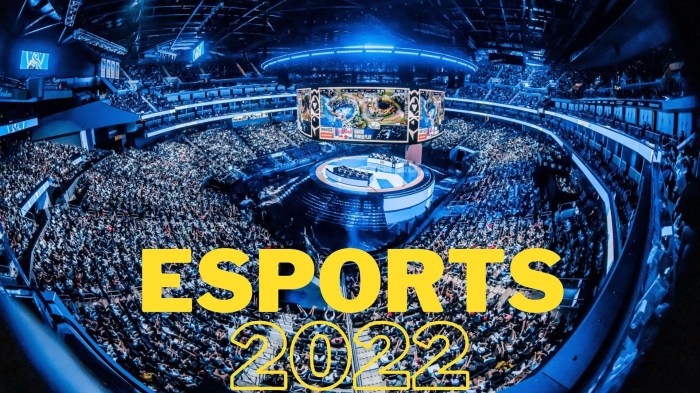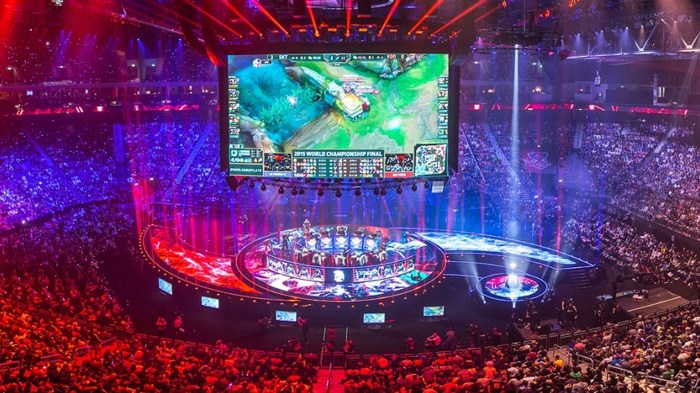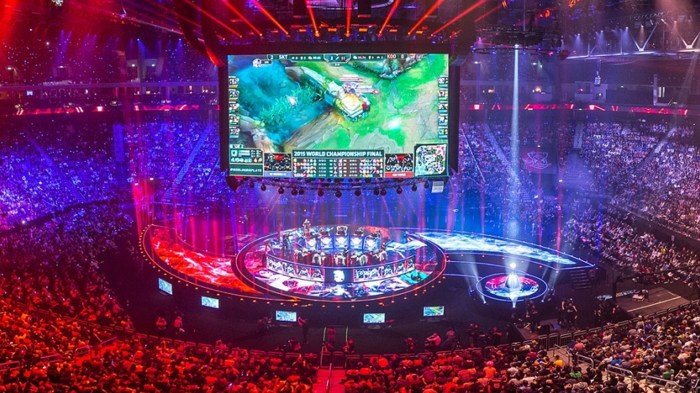Esports events are exploding! From tiny online tournaments to stadium-filling spectacles, competitive gaming has become a global phenomenon. This isn’t just about kids playing video games; it’s a multi-billion dollar industry with dedicated fans, professional players, and massive sponsorships. We’ll explore the growth, formats, economics, audience, and future of this exciting world.
This exploration covers everything from the history of major esports events and their viewership, to the different tournament structures and the financial side of things. We’ll dive into who’s watching, how they’re engaging, and what the future holds for this rapidly evolving landscape. Get ready to level up your understanding of esports!
Esports Event Formats and Structures

So, you’re thinking about throwing an esports tournament? Awesome! But before you start ordering the pizza and energy drinks, you gotta nail down the format. Choosing the right structure is key to a smooth, exciting, and fair competition. Different formats cater to different game types, player bases, and overall goals.Different tournament formats offer unique advantages and disadvantages, significantly impacting the viewing experience and competitive integrity.
The choice often depends on factors such as the number of participants, available time, and the desired level of competition.
Single-Elimination Brackets, Esports events
Single-elimination brackets are the classic tournament structure. Teams play a single match, and the loser is eliminated. This format is straightforward, fast-paced, and creates high-stakes matches early on. However, a single bad game can knock out even the best teams, leading to potential upsets and a lack of opportunities for redemption. The sheer pressure of one-and-done matches makes for dramatic viewing.
Think of the early rounds of the League of Legends World Championship – one loss, and your dream of lifting the Summoner’s Cup is over.
Round-Robin Tournaments
In a round-robin tournament, each team plays every other team once (or more, depending on the setup). This ensures a more balanced competition, as every team gets a chance to prove themselves against all opponents. However, round-robin formats can be incredibly time-consuming, especially with a large number of participants. The Overwatch League, with its extensive regular season, utilizes a round-robin format to determine team rankings.
The longer duration allows for a more comprehensive evaluation of team skill and consistency.
Group Stages
Group stages often precede a single-elimination bracket or another playoff format. Teams are divided into groups, and they play each other within their group. The top teams from each group then advance to the next stage. This format combines the best aspects of round-robin and single-elimination, allowing for a more comprehensive evaluation of teams while maintaining a relatively efficient tournament length.
The Dota 2 International uses a group stage followed by a double-elimination bracket to balance competition and minimize the impact of early upsets.
Innovative Event Structures
Recent esports tournaments have seen some truly creative formats. For example, some tournaments incorporate a “swiss-style” system, where teams are matched based on their current win/loss record, ensuring competitive balance throughout the event. Others have experimented with different point systems and bonus rounds to add extra layers of excitement.
A Hypothetical Tournament Structure: The “Phoenix Cup”
Imagine a tournament with a unique twist: the “Phoenix Cup.” This tournament would use a three-stage system. The first stage would be a round-robin group stage, but with a catch: teams can “revive” once during the group stage. If a team loses a match, they can choose to forfeit their next match to “revive” their previous loss, essentially getting a second chance against the team they initially lost to.
This revival mechanic adds a strategic layer, forcing teams to carefully consider their risk tolerance. The top eight teams from the group stage would then advance to a double-elimination bracket. Finally, the top two teams from the double-elimination bracket would face off in a best-of-seven grand final for the ultimate title.
The Role of Event Organizers
Event organizers are the unsung heroes of esports. Their responsibilities are vast, encompassing logistics (venue booking, technical setup, streaming infrastructure), player relations (contract negotiations, dispute resolution, support), marketing and promotion (sponsorship deals, media outreach), and ensuring fair play (rule enforcement, anti-cheating measures). They’re the glue that holds the whole thing together, and without their meticulous planning and execution, even the best game and players wouldn’t shine.
They are responsible for every aspect, from pre-event planning to post-event analysis. They need to be experts in logistics, marketing, player management, and tournament rules.
The Economics of Esports Events

Esports events have exploded in popularity, transforming from niche gatherings to massive spectacles generating millions in revenue. Understanding the financial landscape of these events is crucial for both participants and observers, revealing the complex interplay of revenue streams, investment strategies, and regional economic impact. This analysis will delve into the key economic drivers of esports events, providing a clearer picture of this rapidly evolving industry.
Revenue Streams of Esports Events
Esports events generate revenue through a diverse range of channels. The primary sources are ticket sales, sponsorships, media rights, and merchandise. These streams contribute in varying proportions depending on the scale and prestige of the event. A typical revenue breakdown might look something like this, although the exact percentages can fluctuate significantly based on the specific event:
Imagine a pie chart. A large slice, perhaps 40%, represents Sponsorships. This includes deals with companies like energy drink brands, gaming hardware manufacturers, and telecommunication providers. Another significant slice, around 30%, is allocated to Media Rights, encompassing broadcasting deals with streaming platforms like Twitch and YouTube, as well as traditional television networks. Ticket Sales would make up a smaller, but still substantial, portion, perhaps 20%, reflecting the increasing popularity of live esports viewing experiences.
The remaining 10% could be attributed to Merchandise Sales, ranging from team jerseys and branded apparel to collectible figurines and other fan-related items.
Economic Impact of Esports Events on Different Regions
The economic impact of esports events varies greatly depending on the host region. Events held in major metropolitan areas with established infrastructure and a large, engaged fanbase tend to see greater economic benefits. For example, a major tournament held in a city like Los Angeles might generate significant revenue through tourism, hospitality, and local spending by attendees and participants.
In contrast, smaller events in less developed esports markets might have a more limited but still positive impact, stimulating local businesses and creating jobs related to event organization and support. The overall impact is often measured by considering factors such as direct spending, indirect economic activity, and job creation. The presence of large international events can boost a region’s profile, attracting further investment and promoting economic growth in the long term.
Investment Strategies in Esports Events
Several key stakeholders invest heavily in esports events. Tournament organizers, like ESL and Riot Games, invest in event production, marketing, and prize pools to attract top talent and viewers. Esports teams invest in player salaries, coaching staff, and training facilities to enhance their competitive edge. External investors, including venture capital firms and private equity groups, see esports as a lucrative growth sector and provide funding for various aspects of the industry, from team acquisitions to the development of new technologies and platforms.
These investment strategies are often driven by projections of future revenue growth and the potential for high returns. For instance, a venture capital firm might invest in a promising esports team with the expectation that its success will lead to increased sponsorship deals and media rights revenue, generating substantial returns on their investment. Similarly, a large corporation might sponsor a prominent tournament to increase brand awareness and reach a younger demographic.
FAQ Resource: Esports Events
How much do professional esports players make?
Salaries vary wildly, from a few thousand dollars a year for lower-tier players to millions for top earners in popular titles like League of Legends or Dota 2. Earnings also depend on tournament winnings, sponsorships, and streaming revenue.
Are esports events rigged?
While isolated incidents of match-fixing have occurred, major esports organizations have implemented strict anti-cheating measures and regulations to maintain fairness and integrity. The vast majority of events are genuinely competitive.
What are the health concerns associated with professional gaming?
Professional gamers face risks like repetitive strain injuries, eye strain, sleep deprivation, and mental health challenges due to intense competition and pressure. Many organizations are working to address these issues with better training and support.
